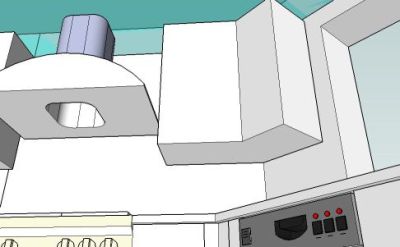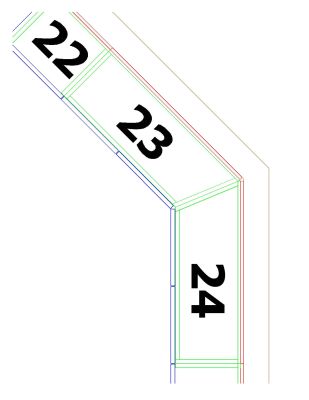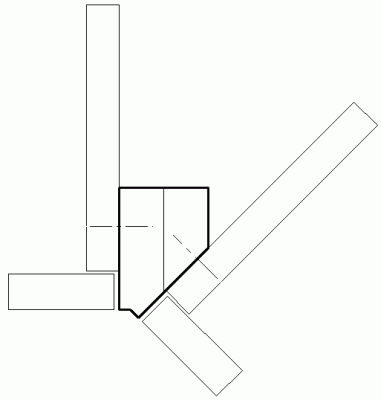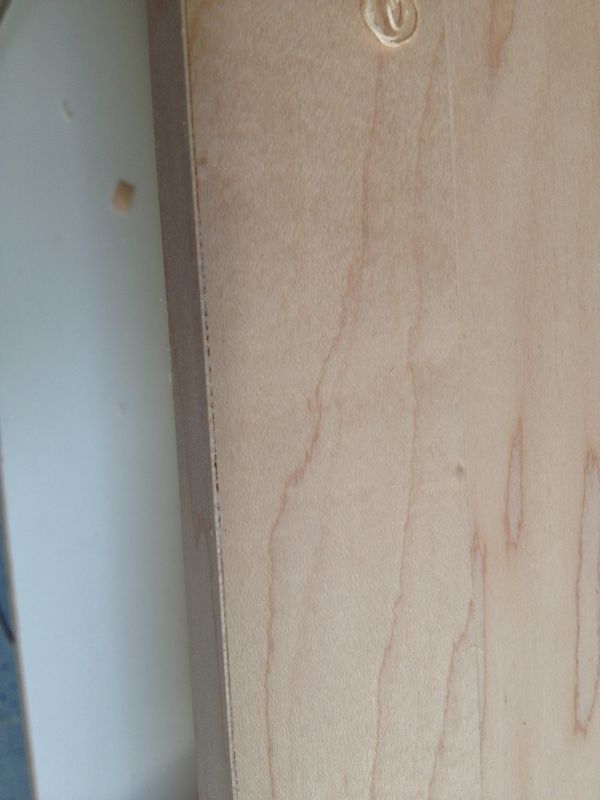Cabinets in a Wide-Angle Corner
Thoughts on building adjoining frameless cabinets to fit into a 135-degree inside corner. November 10, 2006
Question
The attached picture from my Sketchup model shows an arrangement of wall cabs in a kitchen with a 135 degree corner. Doing frameless cabs, how would you handle this? Photos or drawings of details would be helpful.

Forum Responses
(Cabinetmaking Forum)
From contributor D:
Perhaps you could hinge one large door off of the right hand side of the smaller right hand cab. Edge gluing the doors at a 67.5 angle would be easy. I always build inset ff cabs, but that's my two cents. I guess the other option would be to pad out the hinges and hinge both doors off of the center bulkhead. I would recommend you build this cabinet as one unit.
From contributor H:
Build as one cabinet and try a lazy susan hinge and magnetic stop to hold door closed.
From contributor B:
We've built these as separate cabinets, using hinges from Blum's angled hinge program. You just need to be careful about laying it out with the specs for the correct hinge; watch gaps and overlays carefully. We draw it in CAD, but you could also draft it full-scale. You may want to order the hinges (and wedge if required) and do a mockup first. Here's an image. It's a plan view. Blue is the doors and green is the carcass components.

From the original questioner:
Actually, I have thought of making this up as two simple frameless boxes, with a "joiner strip" at the front edge, screw-fastened to the cabs. We are not concerned about the void that can be seen at top and bottom. The strip is made up from 2 thicknesses of 5/4 species.

From contributor K:
I agree with contributor H... It's not that dramatic, make it as one cabinet (although I would probably have it open from the center, less stress on hinges and cab). Your customer (and their warm referral market) will be more impressed at the end result, as they will be able to use the whole cabinet and it will look more impressive... that's what custom is all about, yes?
From a business perspective, it will take you less time to fabricate, less time to assemble, less materials, and less time to install than if it were two cabs. All this equals more profit for the job, not less.



